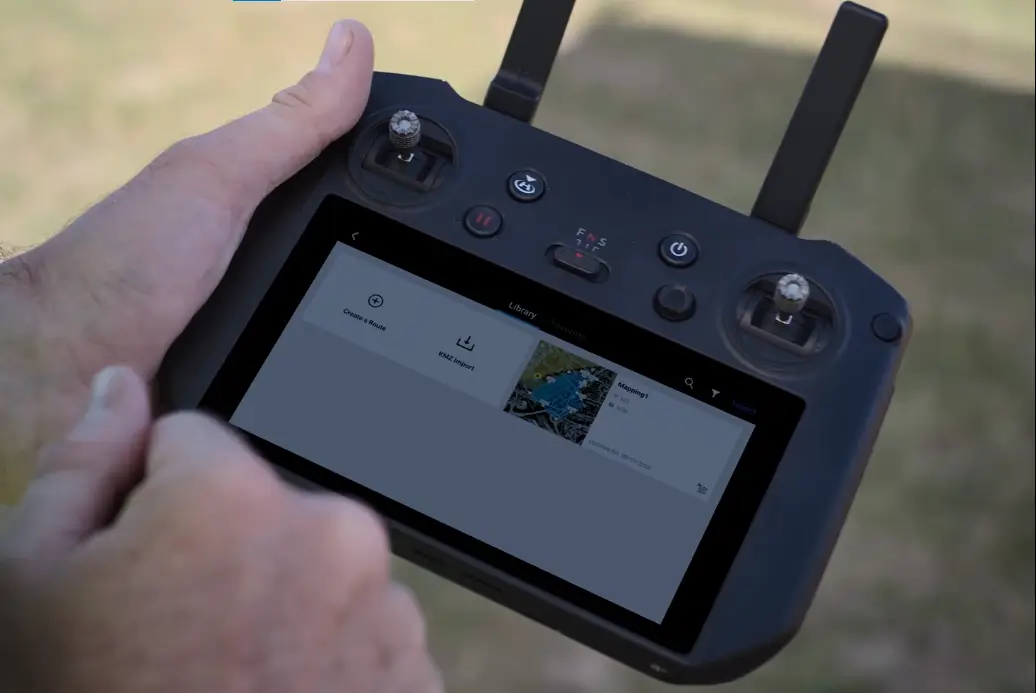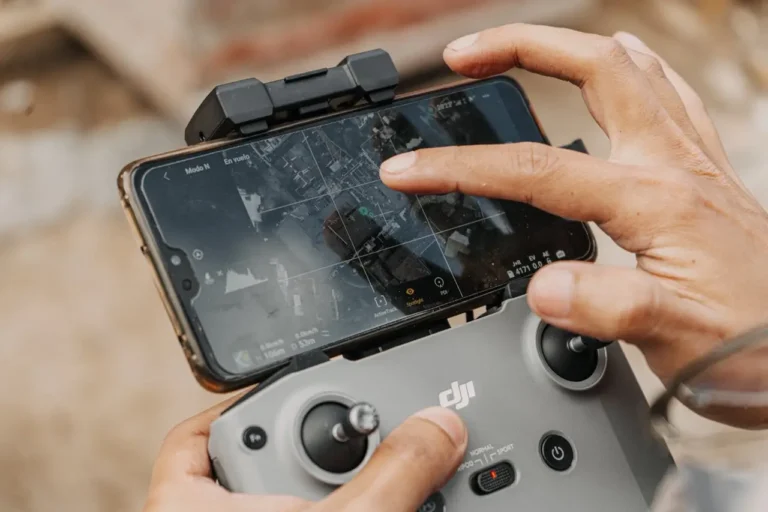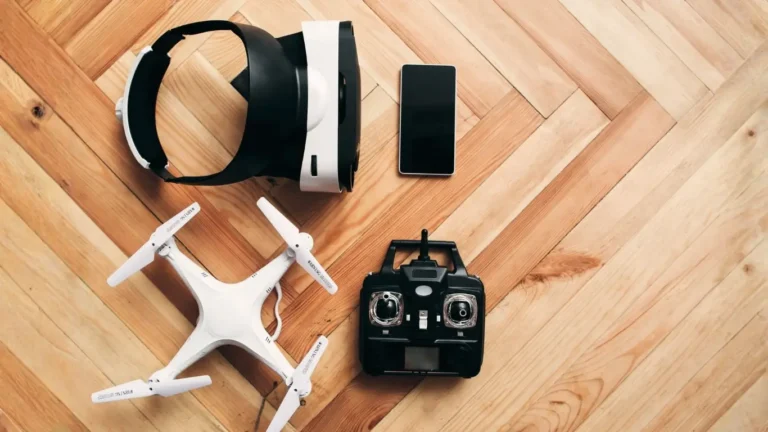DJI Mavic 3T Thermal Drone Review: The Ultimate Field Test
(This guide has links to Amazon. If you purchase a product through these links, we may receive a small fee, but it won’t cost you any extra. This helps us keep testing and writing honest reviews.)
In public safety and industrial inspection, seeing the unseen isn’t a luxury—it’s a necessity. For years, professionals have relied on bulky and expensive equipment to obtain thermal data. DJI has steadily been shrinking this tech, and their latest offering, the DJI Mavic 3T Thermal Drone, might be the new benchmark for portable, powerful aerial thermography.
In This Article
We’ve spent the last several weeks putting the DJI Mavic 3T Thermal Drone (part of the Mavic 3 Enterprise series) through its paces. We’ve flown it on simulated search and rescue missions, conducted building envelope inspections, and assessed its utility for solar farm analysis. This is not just a drone with a camera; it’s a sophisticated data-gathering tool.
So, does it live up to the hype? Is this the new workhorse for professionals who need to deploy quickly and see in the dark? This is our full, hands-on review.

Quick Verdict: A New Standard
Before we dive deep, here’s our 30,000-foot view. The DJI Mavic 3T Thermal Drone is a game-changer in terms of portability and power. It packs a surprisingly capable tri-camera system into the familiar, foldable Mavic airframe.
It combines the flight performance of a flagship consumer drone with the specialised sensors professionals need. It’s not perfect, but it gets incredibly close.
Pros and Cons
| Pros | Cons |
|---|---|
| Exceptional Portability: Folds down small, deploys in seconds. | Premium Price: A significant investment for any organisation. |
| Powerful Tri-Camera System: Capable of thermal, wide, and zoom. | Enterprise Ecosystem: Locked into DJI’s pro software (Pilot 2). |
| Class-Leading Flight Time: Up to 45 minutes (rated), 35+ (real-world). | Not for Beginners: This is a pro tool, not a toy. |
| Excellent RC Pro Controller: Bright screen, solid O3 transmission. | Data Processing Needs: R-JPEG thermal images require software. |
| Top-Tier Safety Features: Omnidirectional sensing for peace of mind. | Zoom is Good, Not Great: The 12MP zoom is useful but not its best camera. |
Unboxing and First Impressions
The Mavic 3T package screams “professional.” It typically ships with a rugged hard case that holds all the necessary items. Opening it up, you find:
- The DJI Mavic 3T Thermal Drone airframe.
- The DJI RC Pro Enterprise controller.
- Multiple Intelligent Flight Batteries (usually three in a ‘Fly More’ style kit).
- A 100W charging hub and 100W power adapter.
- Spare propellers, cables, and a screwdriver.
Our first hands-on impression is one of familiarity. If you’ve ever handled a Mavic 3, you know this build. It feels dense, solid, and of premium quality. The arms unfold with a satisfying, stiff click. At 920g, it’s light enough to be considered “portable” but has enough heft to inspire confidence in breezy conditions.
The real difference is the gimbal payload. It’s a beefy, three-sensor setup that sits prominently on the nose. Setting it up is a breeze. Unfold arms, attach props (if needed), power on the drone and controller, and you’re airborne in under two minutes. This speed is a critical advantage for first responders.

The Tri-Camera Powerhouse
This is the heart of the DJI Mavic 3T Thermal Drone. You get three distinct sensors in one gimbal, and you can view them individually or in a split-screen mode on the controller.
1. The Thermal Sensor
This is why you buy the ‘T’ model. The Mavic 3T is equipped with a 640×512 resolution radiometric thermal camera. In the world of aerial thermography, that 640-pixel width is the gold standard for this form factor.
What does “radiometric” mean? It means every single pixel in that 640×512 grid isn’t just a color; it’s a temperature data point. You can tap anywhere on the screen to get a spot temperature reading or draw a box to find the average, high, and low temps in that area.
Our experience was impressive. We were able to clearly identify a “person” (a team member) hiding in dense foliage from 150 feet up during a simulated search. In a roofing inspection, a faulty-sealed-unit window and a patch of water ingress under a flat roof glowed brightly, issues that were completely invisible to the naked eye.
The sensor records in R-JPEG (Radiometric JPEG), which embeds all that temperature data into the image file. You can then analyse it later using DJI’s free Thermal Analysis Tool or other professional software.
2. The Wide Camera
- Sensor: 48MP, 1/2-inch CMOS
- Lens: 24mm equivalent, f/2.8
This is your main “eyes-on” camera. It provides a wide field of view, equivalent to the main camera on many smartphones. This is your go-to for general situational awareness, mapping, and creating visual context for your thermal finds.
In our tests, the 48MP sensor (which typically pixel-bins to a 12MP image) is sharp and clean. It’s excellent for quickly surveying a scene, whether it’s a crash site or a large commercial roof.
3. The Tele (Zoom) Camera
- Sensor: 12MP, 1/2-inch CMOS
- Lens: 162mm equivalent, f/4.4
- Zoom: 56x Hybrid Zoom
This is the “get closer without moving” camera. A 162mm equivalent lens is a significant telephoto. While the 12MP sensor isn’t as robust as the 48MP wide, its utility is undeniable.
We used it to read a license plate from 100 feet away (for investigative simulation) and to inspect a cell tower component without having to fly dangerously close to the structure. The “hybrid” zoom means it’s optical up to a point, then digitally punches in. The quality degrades at the full 56x, but it remains usable for quick identification tasks.
Working Together
The magic happens in the DJI Pilot 2 app. You can put the thermal and visual (wide or zoom) feeds side-by-side. This is critical. It gives you context. You’re not just looking at an abstract heat blob; you can see the heat blob overlaid on the thing itself. This fusion of data is what makes the Mavic 3T so powerful.

In-Depth Flight Performance Review
A great camera is useless if the drone can’t get it to the right spot, safely.
Handling and Stability
The DJI Mavic 3T Thermal Drone flies, well, like a Mavic 3. Which is to say, it’s superb. It’s fast, responsive, and incredibly stable. We flew in winds gusting up to 25 mph, and while the drone was visibly fighting it, the gimbal footage remained rock-solid. The drone never felt out of control.
Flight Time
DJI advertises a 45-minute max flight time. As pros, we know “max time” is a lab-tested number. In the real world, here’s what we got:
- Aggressive Flight (windy, fast): 32-34 minutes.
- Positional Hovering (inspection): 36-38 minutes.
- “Land at 20% Battery” Safety: A reliable 35 minutes of usable mission time.
This is class-leading. Thirty-five minutes is a long time to have eyes in the sky. For a search and rescue grid or a full building scan, this reduces battery swaps and increases efficiency.
Safety and Transmission
This drone is loaded with sensors. It has omnidirectional obstacle avoidance, meaning it can see and avoid obstacles in all directions (front, back, left, right, up, and down).
Our test: we flew it at 15 mph toward a building (in a controlled test). The drone braked firmly and stopped, refusing to hit it. We then tried to fly it sideways through a narrow gap between trees. The APAS 5.0 system artfully navigated around the branches. This isn’t just a gimmick; it’s a multi-thousand-dollar drone-saving feature that gives pilots the confidence to fly in complex environments.
The O3 Enterprise transmission system provides a crisp 1080p feed to the controller, and in our line-of-sight tests, it was flawless out to several miles.
Software: The Enterprise Ecosystem
You don’t fly the Mavic 3T with the consumer “DJI Fly” app. This runs on the DJI Pilot 2 application, a purpose-built suite for enterprise missions.

The RC Pro Enterprise
This controller is a highlight. The 1000-nit screen is bright enough for use in direct sunlight—a massive improvement over using a smartphone. It has a built-in microphone for the drone’s “loudspeaker” feature and feels great in the hands.
DJI Pilot 2
The app is dense, but powerful. This is where you access all the thermal tools:
- Palettes: White Hot, Black Hot, Iron Red, etc.
- Isotherms: Set a temperature range to highlight (e.S., “Only show me things between 95° and 100°”).
- Spot Meter & Area Measurement: Get live temp data.
- Mission Planning: Create automated flight paths for mapping or inspections.
There’s a learning curve, but it’s logically laid out. This is also where you manage data security. The Mavic 3T features a “Local Data Mode” that completely severs the drone’s internet connection, ensuring that sensitive mission data stays on the device—a critical feature for many agencies.
Who is the DJI Mavic 3T Thermal Drone For?
This is a vital part of our review. This drone is not for everyone.
This drone is the new gold standard for:
- Fire Departments: For scene size-up, finding hotspots in a structure, and search and rescue (SAR).
- Police/Law Enforcement: For overwatch on tactical operations, fugitive searches, and accident reconstruction.
- Industrial Inspectors: For inspecting solar panels, building envelopes, power lines, and substations.
- Wildlife Management: For non-invasively counting or tracking animals.
Who is this drone NOT for?
- Hobbyists: It’s total overkill. Get a Mavic 3 or Mini 3 Pro.
- Cinematographers: The cameras are for data, not beauty. The Mavic 3 Cine is the tool for that job.
- Absolute Beginners: While it’s easy to fly, the cost and complexity of the payload mean it should be piloted by someone with training.
The Competition
The leading competitor in this space is the Autel EVO II Dual 640T. For years, Autel has been a strong alternative. The Mavic 3T’s primary advantages over the Autel, in our experience, are the superior O3 transmission system, the longer 35-minute real-world flight time (compared to Autel’s ~30 minutes), and the addition of a third (zoom) camera.
Key Takeaway
After weeks of intensive use, our team is in agreement: the DJI Mavic 3T Thermal Drone is a masterpiece of engineering. It’s a force multiplier for any professional organisation.
It takes the high-end 640×512 thermal resolution that used to be reserved for $15,000+ aircraft and packs it into a sub-$6,000, 920g airframe. It combines this with best-in-class flight time, rock-solid safety features, and a third zoom lens for added versatility.
Is the DJI Mavic 3T Thermal Drone worth the investment? If your job involves finding people, assessing risk, or inspecting infrastructure, the question isn’t “can you afford to buy it?” It’s “can you afford not to?”
This drone sets a new standard for portable, professional thermal operations. It’s a tool that will, without a doubt, save property and lives.

Flying a drone with a good camera truly feels like you’re soaring through the air, taking in the breathtaking landscape below, and enjoying the scenic views. This experience is what fuels my passion for flying drones. With over 20 years of experience as a certified electronics technician, I possess the skills to thoroughly test drones, both electronically and mechanically, and provide valuable insights. I genuinely hope my knowledge can assist you in making any decisions related to drones.



